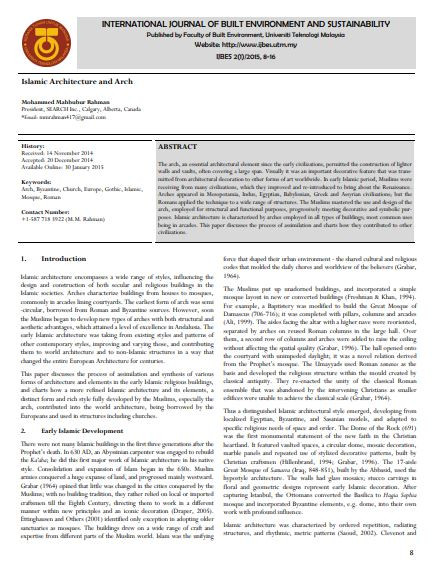
Islamic architecture encompasses a wide range of styles, influencing the
design and construction of both secular and religious buildings in the
Islamic societies. Arches characterize buildings from houses to mosques,
commonly in arcades lining courtyards. The earliest form of arch was semi
-circular, borrowed from Roman and Byzantine sources. However, soon
the Muslims began to develop new types of arches with both structural and
aesthetic advantages, which attained a level of excellence in Andalusia. The
early Islamic architecture was taking from existing styles and patterns of
other contemporary styles, improving and varying those, and contributing
them to world architecture and to non-Islamic structures in a way that
changed the entire European Architecture for centuries.
This paper discusses the process of assimilation and synthesis of various
forms of architecture and elements in the early Islamic religious buildings,
and charts how a more refined Islamic architecture and its elements, a
distinct form and rich style fully developed by the Muslims, especially the
arch, contributed into the world architecture, being borrowed by the
Europeans and used in structures including churches.
I agree to the terms outlined below:
You agree to upload and assign Mosqpedia Database the rights to use the content worldwide and in perpetuity across all current and future media platforms. Mosqpedia Database may edit, copy, adapt and translate your contribution.
The content will be distributed under the Creative Commons Attribution-Deed – Attribution-NonCommercial-NoDerivatives 4.0 International – Creative Commons
All data will be stored in line with data protection regulations.